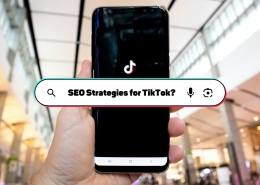5 Food Marketing Tips for Destinations
Updated: November 17, 2022
Food is a heavily craved topic on social media. We are ready to dish on ways destination marketers can make mouths water with content. Here are 5 food marketing tips for destinations.
1. Use exceptional imagery
Feast your eyes on your destination! Do not compromise on the quality of imagery when it comes to promoting food. While you can certainly hire a professional photographer, or scour the internet for UGC, here are some essential tips for capturing delicious looking photos on your smartphone:
-
- Take the picture before you start eating, and arrange food neatly.
- Use natural lighting whenever possible.
- Use neutral tones in the background.
- Adjust the exposure on your phone.
- Try different and creative angles.
- Now and then, add a human element (i.e., a hand holding onto a fork, a video of someone taking a bite, etc.)
2. Find out what people like
Constantly featuring your favorite place to dine is not the best strategy for promoting food in your destination. You may not enjoy the local burger spot, but it could be one of the most popular dining places.
It’s amazing what you can discover by simply asking people where they enjoy eating. Here are a couple of ways you can discover hidden gems in your area:
-
- Casually ask locals, friends, and family where they like to dine. You may learn about unique dishes or kitchen secrets!
- Review Google Analytics and social media insights to see the most popular food-related landing pages, blogs, and posts.
- Check out your destination’s restaurants on TripAdvisor, Yelp, and Google reviews.
- Ask your social media audience to tell you their favorite restaurants, burgers, pizzas, and desserts in the area.
Step outside your comfort zone and be a tourist within your destination. If you have never eaten at a local hotspot, maybe it’s time you give it a try!
3. Use hunger-inducing language
Have you ever written a blog about food and realized the word “delicious” was used more than a couple times? There are so many words to excite the tastebuds, so don’t let them go to waste! Here’s a list of words used to describe food:
appetizing, aromatic, battered, bite-sized, bold, bountiful, bursting, candied, caramelized, charred, cheesy, chewy, chilled, comfort food, creamy, crispy, crumbly, crunchy, cuisine, delectable, delicious, doughy, dripping, drizzled, dusted, earthy, enjoyable, enticing, exquisite, fatty, finger-licking good, fiery, flavorful, fragrant, fresh, fried, frosty, garnish, glazed, gooey, gourmet, gratifying, greasy, hand-held, healthy, hearty, heavenly, infused, intense, inviting, juicy, layered, lemony, light, lip-smacking, luscious, marinated, marvelous, mellow, melting, mouthwatering, nom nom nom, nourishing, nutritious, organic, outstanding, peppery, Pinterest-worthy, pleasant, plump, potent, puffy, rare, refreshing, rib-sticking, rich, ripe, roasted, robust, salty, saturated, savory, scented, seasonal, seasoned, sizzling, smoky, smooth, spicy, sprinkled, succulent, sugary, sweet, tart, tastebuds, tasty, tempting, velvety, vivacious, warm, yummy, zesty!
4. Design for mobile
Pay attention to mobile friendliness when promoting food. This means, try to use vertical images of food wherever possible. Take a look at restaurant listings and blogs on your smartphone, and evaluate their effectiveness. Is your call to action clear? Is the imagery hunger-inducing? See how you can beef up these pages to make your message stronger.
Lastly, Google your destination from your mobile device. Try searching “Where to eat in ______” to see if your content comes up. If not, it’s time to start thinking about optimizing some landing pages, blogs, and/or campaigns to get on Google’s radar!
5. Run an ad campaign
Especially an ad campaign promoting restaurant week! Many of us think of a restaurant week as a way to award locals.
On the contrary, some of our recent restaurant week data has shown 300% to 500% higher consumer engagement on a DMO’s website than other niche campaigns in similar periods. Also, food and drink-related interests drove conversion data supporting visitation and additional queries – supporting the theory that travelers like food and food inspired travel. Even if your destination does not host a restaurant week, support content about dining with paid promotions!










